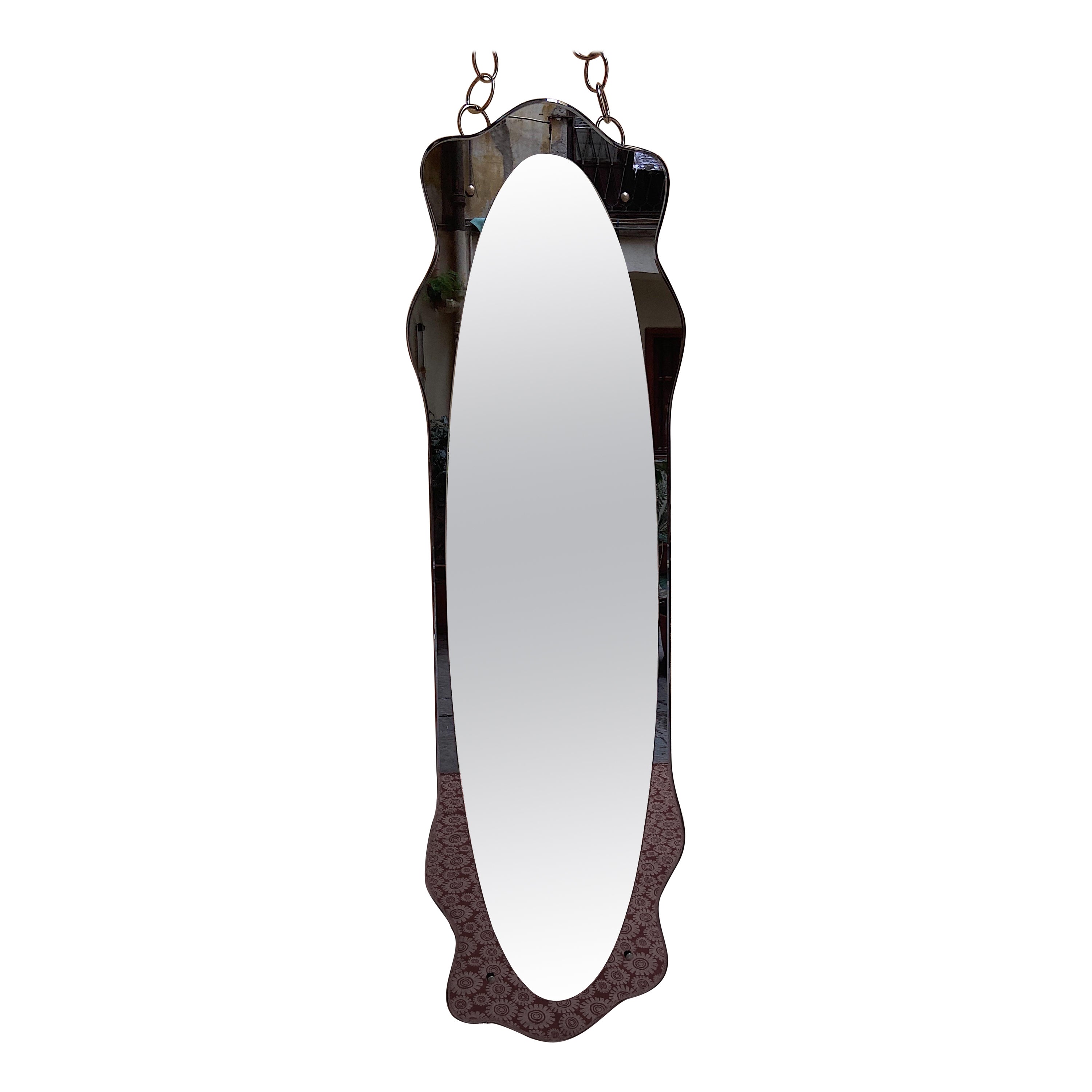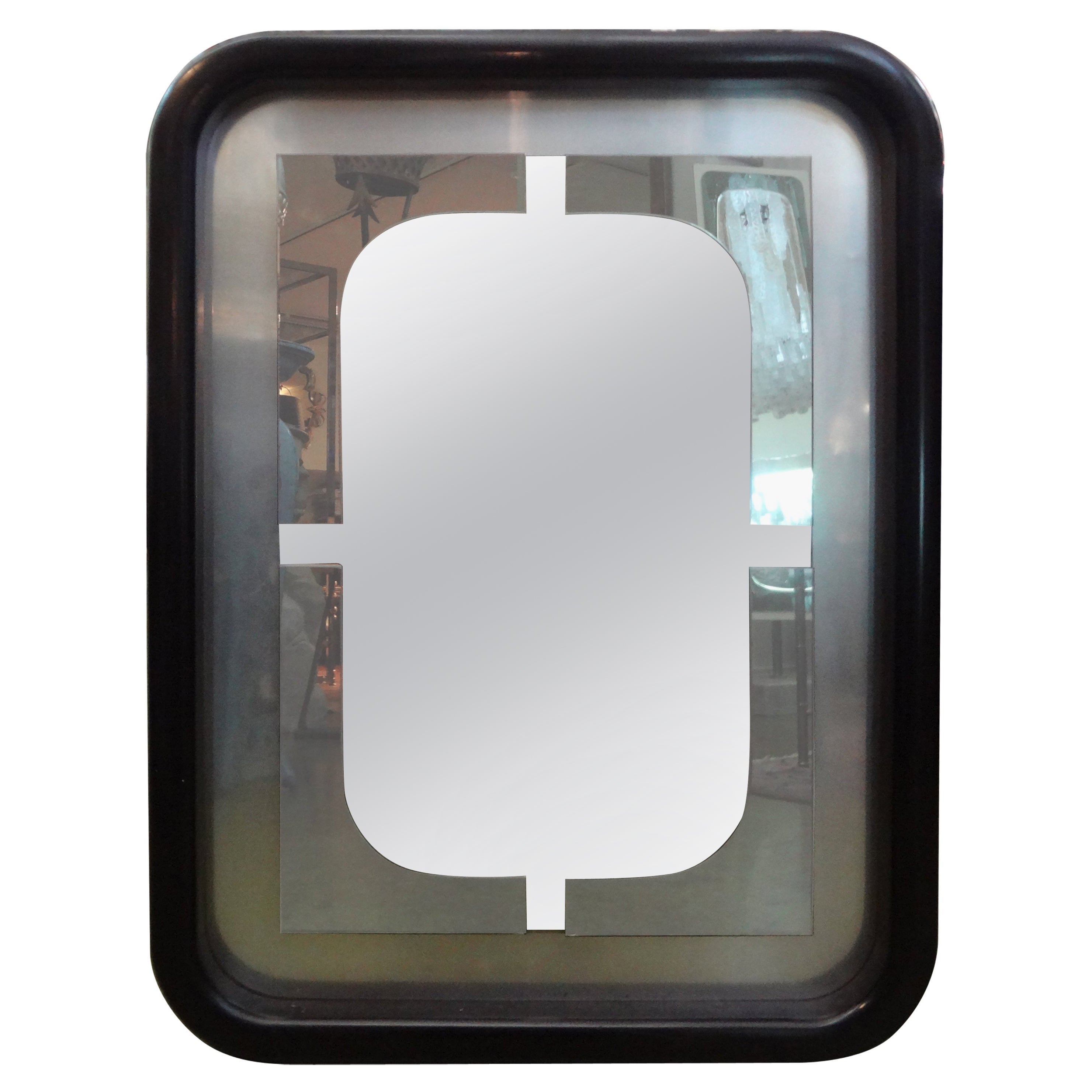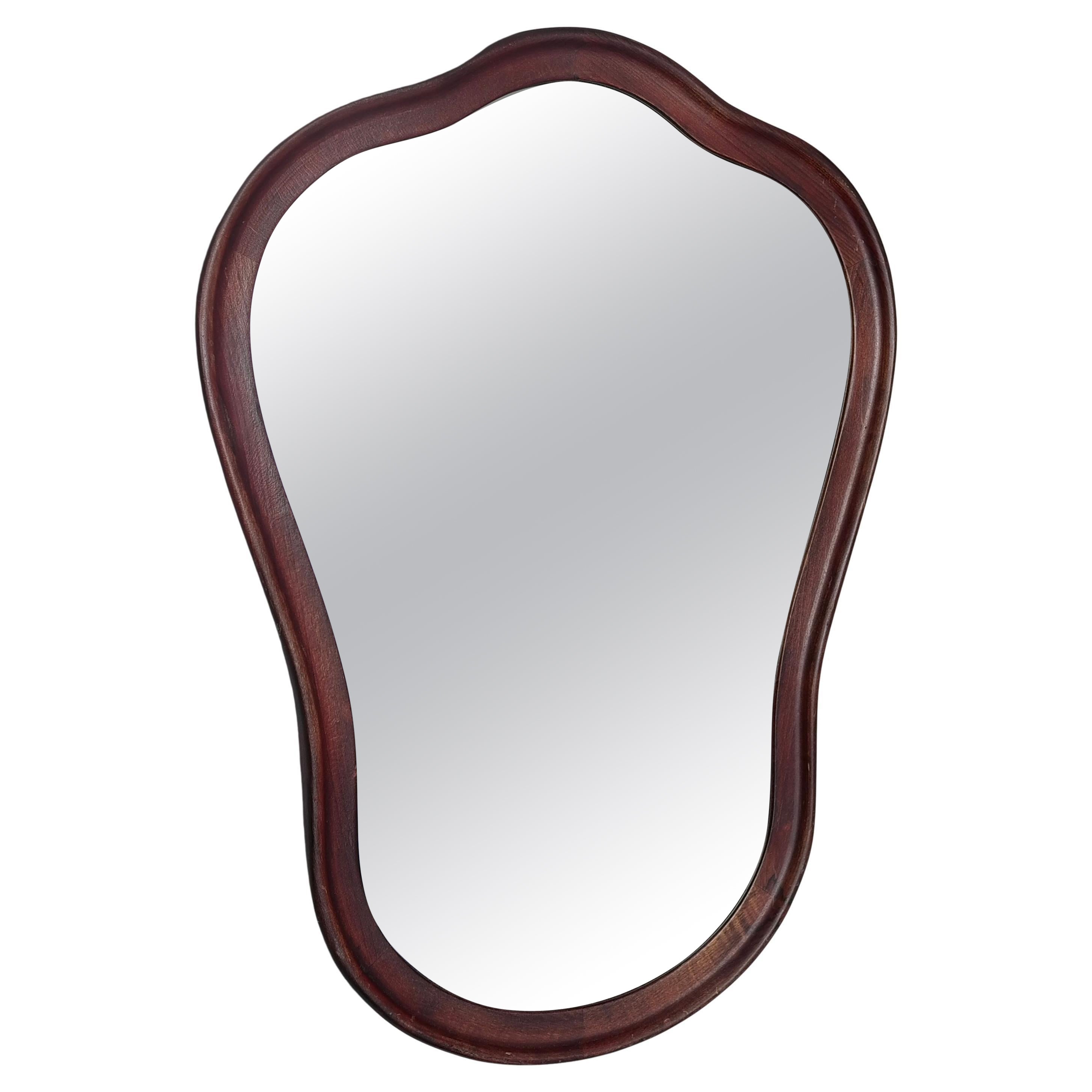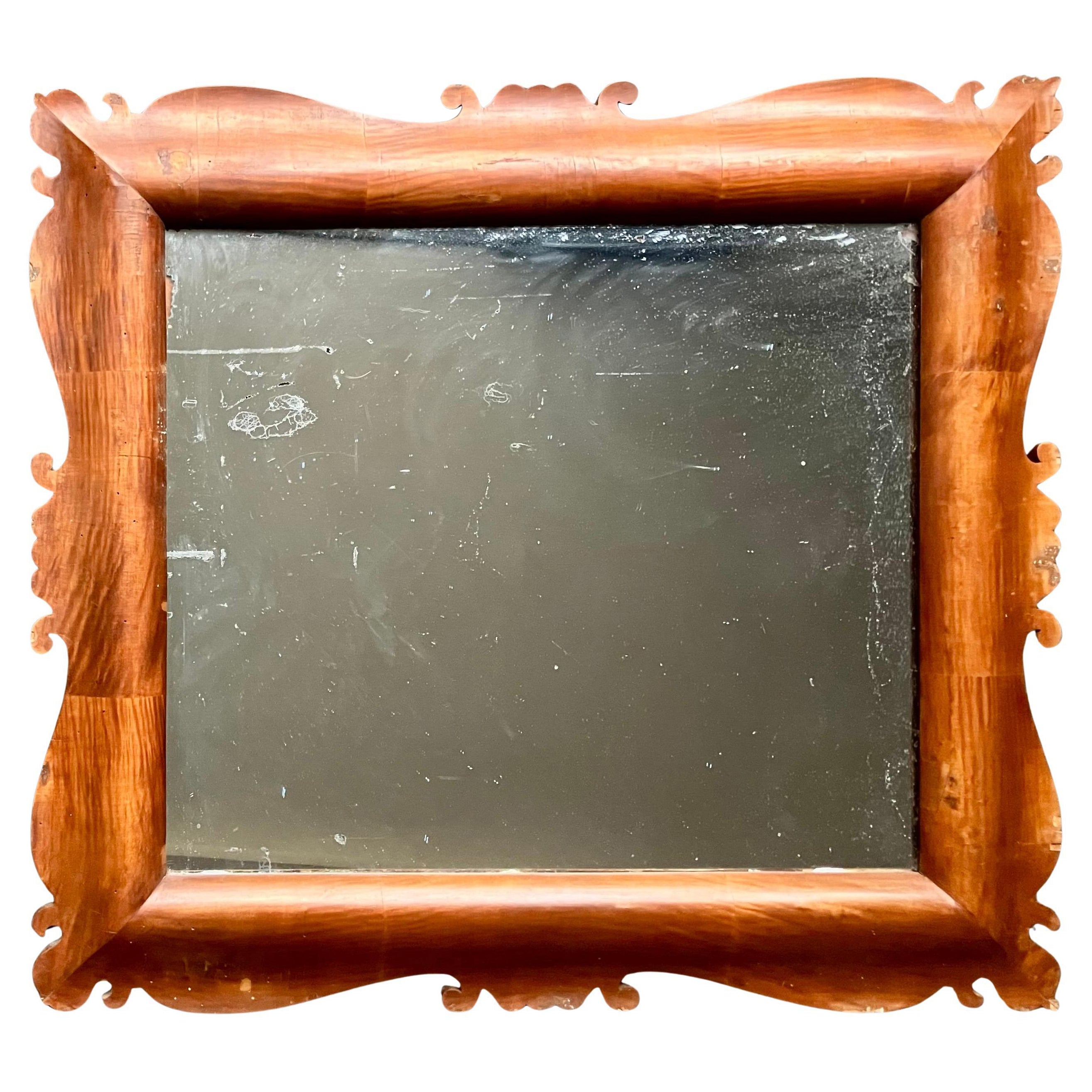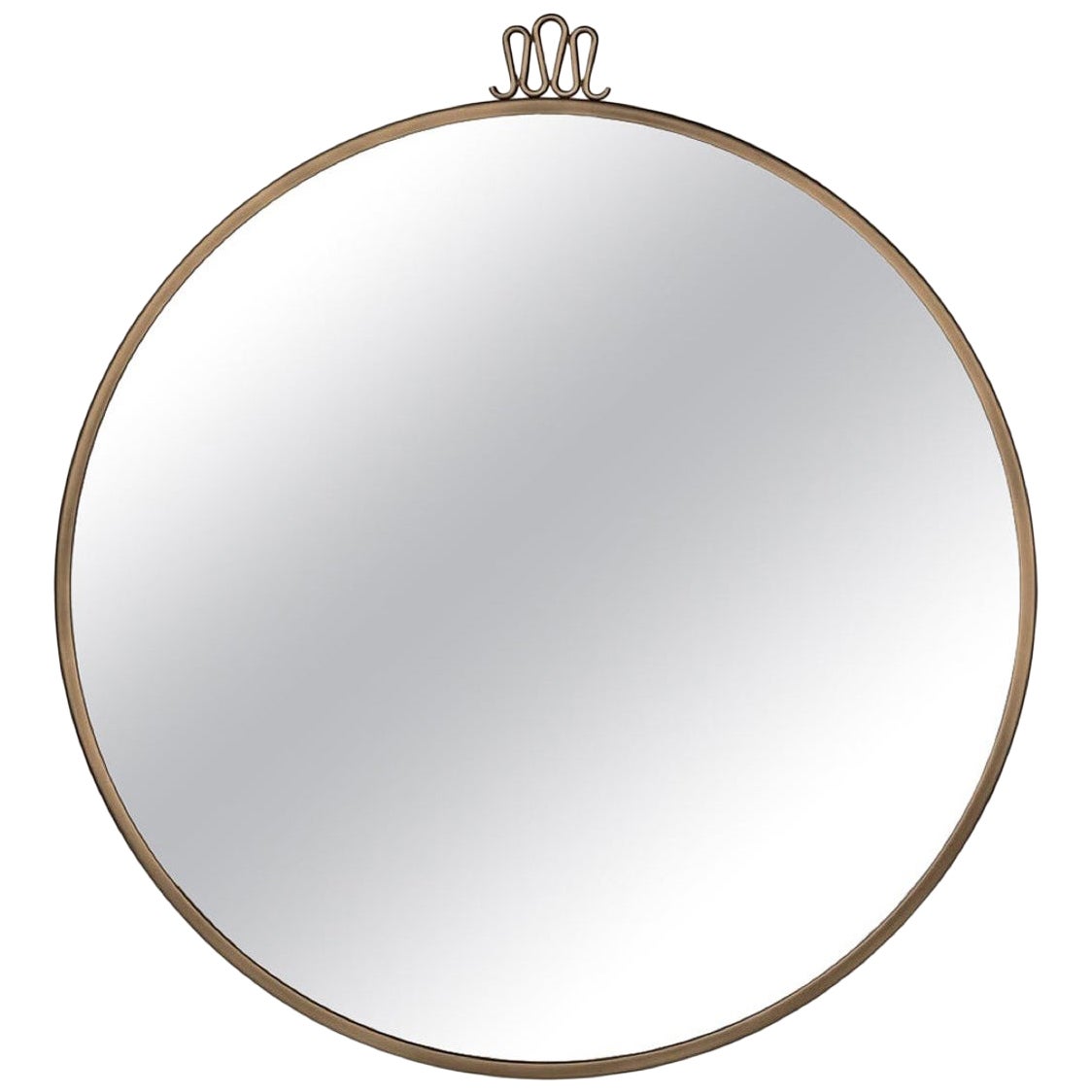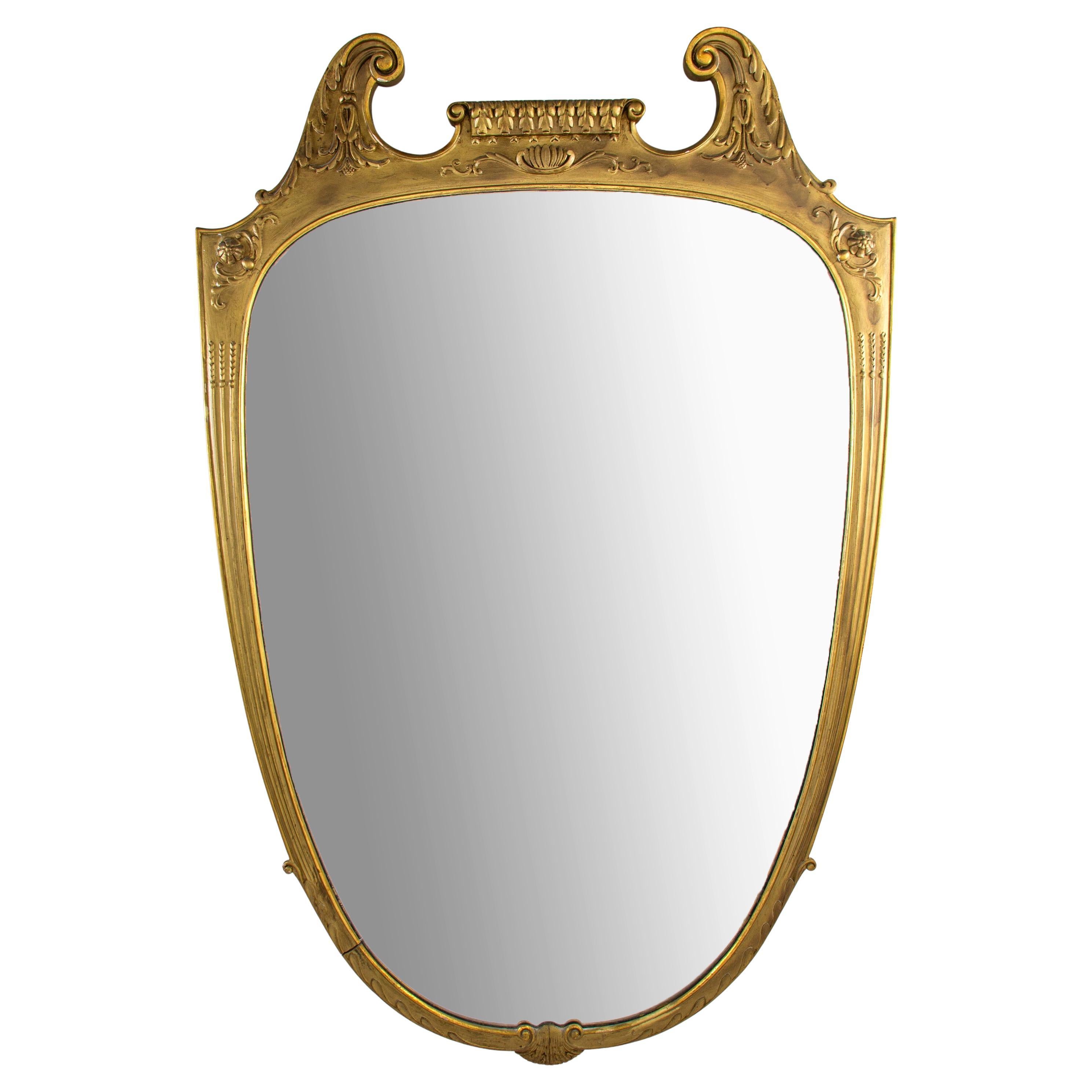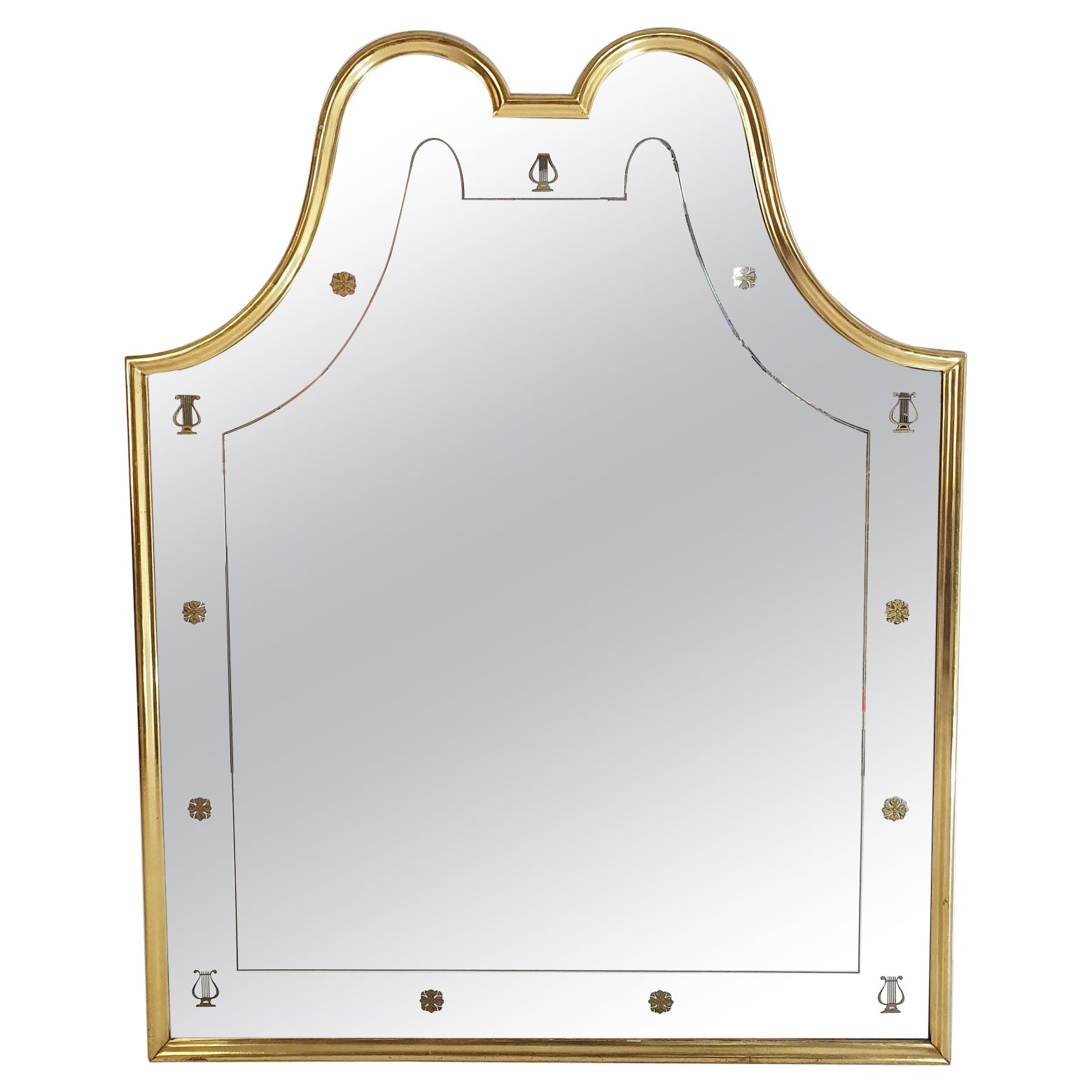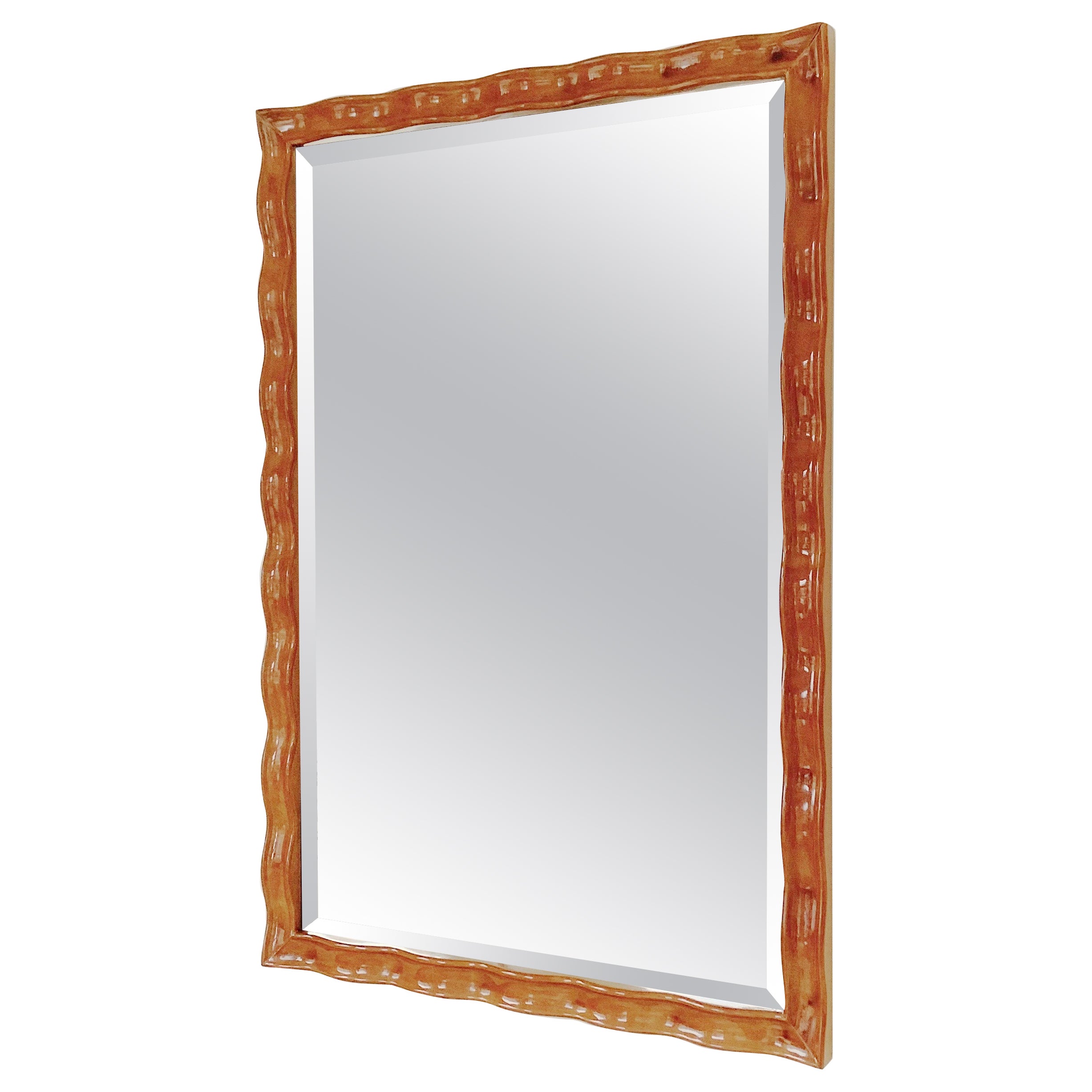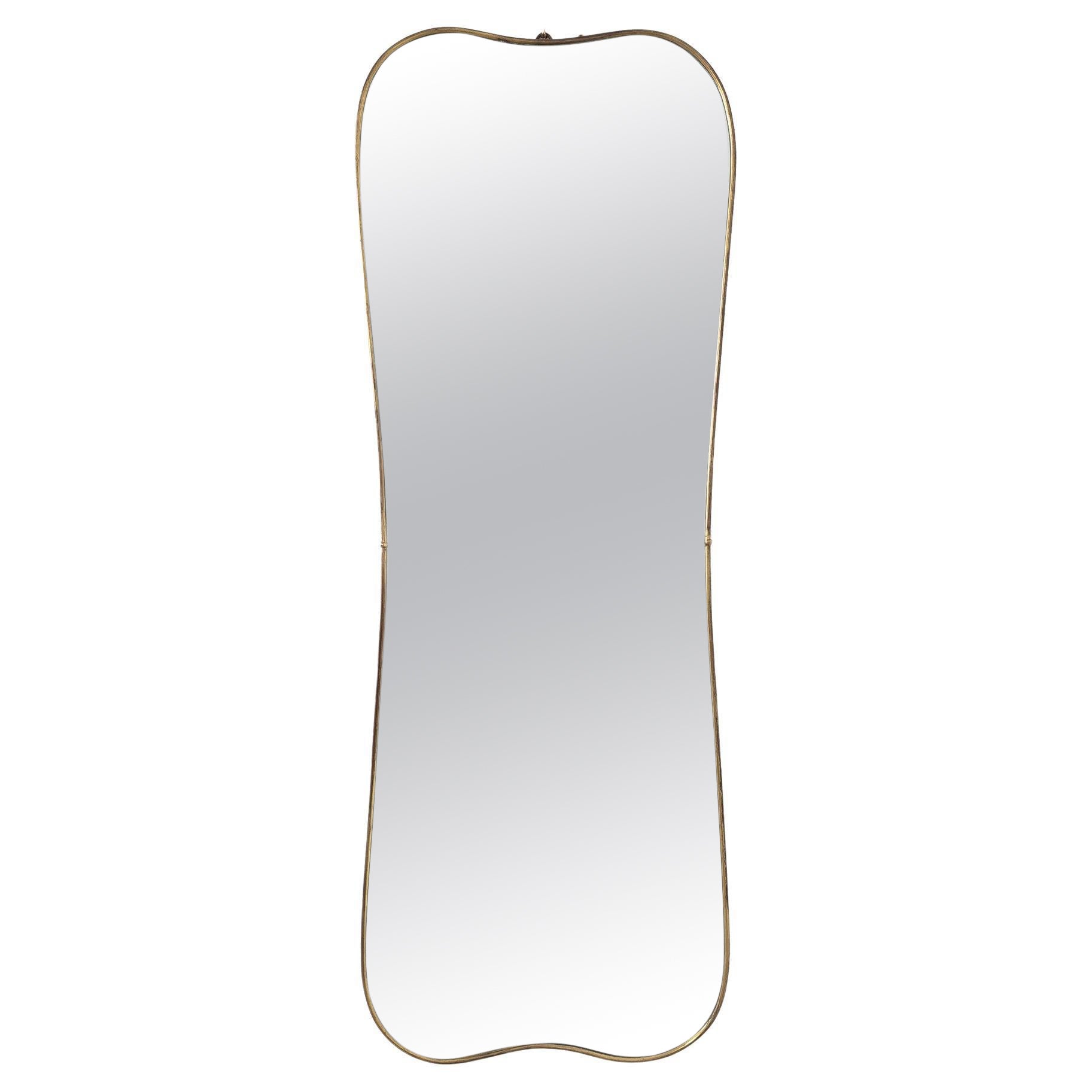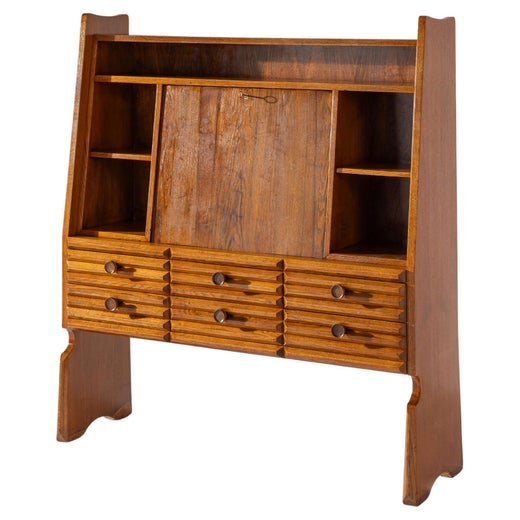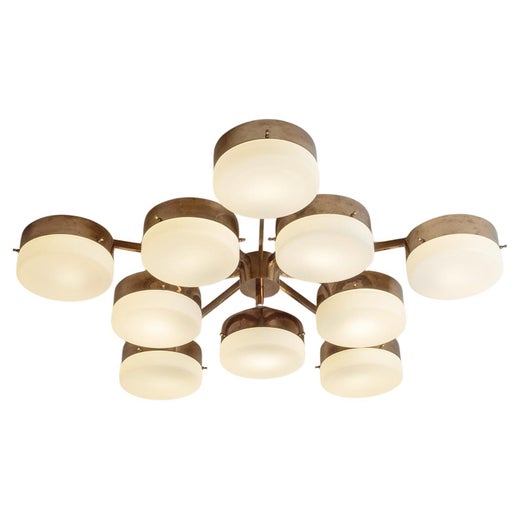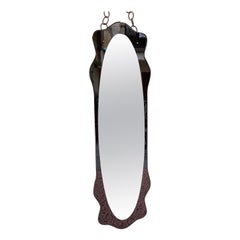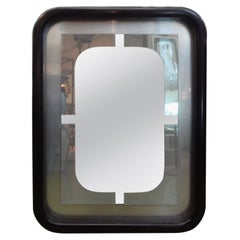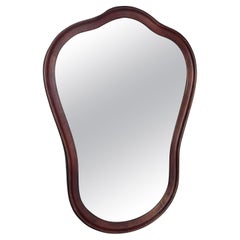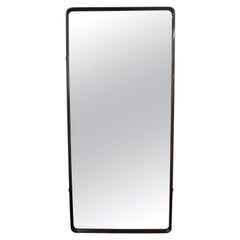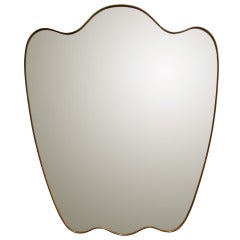
A large curvy mirror
View Similar Items
A large curvy mirror
About the Item
- Creator:Paolo Buffa (Designer),Gio Ponti (Designer)
- Dimensions:Height: 47.63 in (120.99 cm)Width: 39.37 in (100 cm)Depth: 1.18 in (3 cm)
- Place of Origin:
- Period:
- Date of Manufacture:Circa 1950s
- Condition:Minor fading.
- Seller Location:Madrid, ES
- Reference Number:1stDibs: LU9559939954
Paolo Buffa
With a surname that loosely translates to a synonym for “bizarre” in Italian, Milanese designer and architect Paolo Buffa is best known for capturing the best of both old and new in his plush, enveloping lounge chairs and wingback chairs as well as his range of modern tables, each dazzling and provocative but built using classical techniques.
Purposely playful and airy, mid-century Italian interiors encouraged merriment and socializing. Buffa’s work was well suited to this, but unlike the postwar designers who established recognizable trademarks and signatures, his vintage furniture for Cassina and other firms — the sculptural side tables and case pieces of walnut and solid oak, the luxurious sheepskin sofas — differed considerably from one design to the next, making them appealing to a range of interior decorators and socialites with specific taste. The son of a highly sought-after artist, Giovanni Buffa, Paolo graduated in 1927 from Politecnico di Milano. He then spent time working under architects and designers Gio Ponti and Emilio Lancia. Ponti, who himself crafted thousands of furnishings and endlessly creative rooms, was so taken with the young designer that in 1928 he featured his simple and elegant rosewood dressing table in his new magazine, Domus.
After opening a firm with his regular collaborator Antonio Cassi Ramelli, Buffa became one of the leading tastemakers of Italian mid-century modern furnishings, designing for villas and residential buildings across the country. His style was a mix of Art Deco, Rationalism, neoclassicism and a bit of whimsy. He used high-quality materials and regularly worked with local ateliers known for their fine craftsmanship to produce his designs, such as Serafino Arrighi and Marelli & Colico. In 1940, he partnered with the Mario Quarti furniture studio on the royal palace of Albania’s King Zog, with Buffa designing the furniture, and in 1951, Egypt’s King Farouk enlisted him to redecorate his yacht.
While Buffa’s transcendent pieces are now collector’s items, there are a few still in production, such as those he made with Angelo Marelli. His eponymous firm, the Italian furniture producer Eredi Marelli, still manufactures some designs based on Buffa’s archives.
Find a collection of vintage Paolo Buffa furniture today on 1stDibs.
Gio Ponti
An architect, furniture and industrial designer and editor, Gio Ponti was arguably the most influential figure in 20th-century Italian modernism.
Ponti designed thousands of furnishings and products — from cabinets, mirrors and chairs to ceramics and coffeemakers — and his buildings, including the brawny Pirelli Tower (1956) in his native Milan, and the castle-like Denver Art Museum (1971), were erected in 14 countries. Through Domus, the magazine he founded in 1928, Ponti brought attention to virtually every significant movement and creator in the spheres of modern art and design.
The questing intelligence Ponti brought to Domus is reflected in his work: as protean as he was prolific, Ponti’s style can’t be pegged to a specific genre.
In the 1920s, as artistic director for the Tuscan porcelain maker Richard Ginori, he fused old and new; his ceramic forms were modern, but decorated with motifs from Roman antiquity. In pre-war Italy, modernist design was encouraged, and after the conflict, Ponti — along with designers such as Carlo Mollino, Franco Albini, Marco Zanuso — found a receptive audience for their novel, idiosyncratic work. Ponti’s typical furniture forms from the period, such as the wedge-shaped Distex chair, are simple, gently angular, and colorful; equally elegant and functional. In the 1960s and ’70s, Ponti’s style evolved again as he explored biomorphic shapes, and embraced the expressive, experimental designs of Ettore Sottsass Jr., Joe Colombo and others.
Ponti's signature furniture piece — the one by which he is represented in the collections of the Museum of Modern Art in New York, Germany’s Vitra Design Museum and elsewhere — is the sleek Superleggera chair, produced by Cassina starting in 1957. (The name translates as “superlightweight” — advertisements featured a model lifting it with one finger.)
Ponti had a playful side, best shown in a collaboration he began in the late 1940s with the graphic artist Piero Fornasetti. Ponti furnishings were decorated with bright finishes and Fornasetti's whimsical lithographic transfer prints of things such as butterflies, birds or flowers; the Montreal Museum of Fine Arts possesses a 1950 secretary from their Architetturra series, which feature case pieces covered in images of building interiors and facades. The grandest project Ponti and Fornasetti undertook, however, lies on the floor of the Atlantic Ocean: the interiors of the luxury liner Andrea Doria, which sank in 1956.
Widely praised retrospectives at the Queens Museum of Art in 2001 and at the Design Museum London in 2002 sparked a renewed interest in Ponti among modern design aficionados. (Marco Romanelli’s monograph, which was written for the London show, offers a fine overview of Ponti’s work.) Today, a wide array of Ponti’s designs are snapped up by savvy collectors who want to give their homes a touch of Italian panache and effortless chic.
Find a range of vintage Gio Ponti desks, dining chairs, coffee tables and other furniture on 1stDibs.
You May Also Like
Mid-20th Century Italian Mid-Century Modern Wall Mirrors
Glass, Mirror, Wood
Vintage 1960s Italian Mid-Century Modern Wall Mirrors
Stainless Steel
Vintage 1960s Italian Mid-Century Modern Wall Mirrors
Mirror, Wood
Vintage 1960s Italian Mid-Century Modern Wall Mirrors
Brass
Vintage 1940s Italian Baroque Revival Wall Mirrors
Mirror, Wood
21st Century and Contemporary Danish Mid-Century Modern Wall Mirrors
Brass
Recently Viewed
View AllRead More
Barnaba Fornasetti’s Hallucinatory House Has His Father’s Spirit
Behind a nondescript facade in northeastern Milan is the magical residence of Barnaba Fornasetti. It's a shrine to the style developed by his design-legend father, which still defies categorization.
Billy Cotton Layers His Interiors with Lived-In Comfort
The Brooklyn-based designer is adept at styles ranging from austere to over-the-top, espousing an architectural, detail-oriented approach also evident in his line of furniture and lighting.
